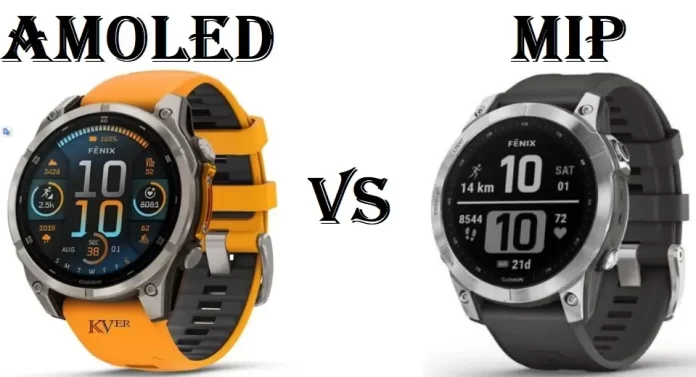Garmin smartwatches have become synonymous with fitness and outdoor enthusiasts, offering robust features and reliable performance. However, a key decision for potential buyers often hinges on the display technology: AMOLED or MIP. Both offer distinct advantages, making the “better” choice highly subjective and dependent on individual needs and priorities.
AMOLED: A Visual Feast
AMOLED (Active Matrix Organic Light-Emitting Diode) displays are renowned for their stunning visuals. Each pixel emits its own light, resulting in vibrant colors, deep blacks, and exceptional contrast. This technology delivers a truly immersive experience, particularly when viewing detailed maps, intricate graphics, or vibrant watch faces. AMOLED screens also excel in low-light conditions, ensuring readability even in dimly lit environments.
However, this visual prowess comes at a cost. AMOLED displays are known for their higher power consumption, which can significantly impact battery life. Additionally, there’s a slight risk of burn-in, where static images may leave faint, permanent marks on the screen.
- Some models use AMOLED screens, including Garmin Forerunner 965, 265, 165, Epix 2, Fenix 8 AMOLED, and Venu 3.
MIP: Endurance and Readability
MIP (Memory-in-Pixel) displays prioritize efficiency and outdoor visibility. These screens utilize ambient light for visibility, making them highly readable in direct sunlight. This characteristic is invaluable for outdoor activities and athletes who spend significant time under bright conditions. Moreover, MIP displays are incredibly power-efficient, enabling extended battery life, a crucial factor for those who rely on their watches for multi-day adventures or long training sessions.
While MIP displays offer exceptional endurance, they may not match the visual vibrancy of AMOLED screens. Colors can appear less saturated, and the overall display might lack the same level of detail. Additionally, MIP screens may struggle in low-light conditions, requiring more effort to read compared to their AMOLED counterparts.
- Some models use MIP screens, including Garmin Forerunner 955, Fenix 7, Fenix E, and Enduro 3…etc.
The User Experience: A Divided Front
Garmin forums and social media groups are filled with passionate debates between AMOLED and MIP enthusiasts.
- AMOLED Advocates: These users prioritize aesthetics and visual appeal. They appreciate the vibrant colors, high-resolution displays, and enhanced low-light visibility offered by AMOLED technology.
- MIP Supporters: This camp values extended battery life and superior outdoor readability. They often prioritize functionality over aesthetics and appreciate the “always-on” capabilities enabled by MIP’s power efficiency.
Beyond the Tech Specs
The choice between AMOLED and MIP extends beyond technical specifications. Consider these factors:
- Lifestyle: Are you an avid runner who needs a watch that lasts for days on end? Or do you prioritize style and enjoy vibrant watch faces?
- Usage Patterns: How often do you use your watch in low-light conditions? How important is sunlight readability for your activities?
- Budget: AMOLED displays often come at a premium price point.
The Verdict: A Personal Choice
Ultimately, the “better” display technology depends entirely on individual needs and preferences. There is no one-size-fits-all solution. By carefully considering your priorities and usage patterns, you can select the Garmin smartwatch that best aligns with your specific requirements.
The decision between AMOLED and MIP ultimately boils down to your individual needs and priorities.
Choose AMOLED if:
- Visuals are paramount: You prioritize stunning visuals, vibrant colors, and deep blacks. You enjoy high-resolution displays and appreciate the enhanced low-light visibility.
- Style is key: You value a sleek, modern aesthetic and enjoy customizing your watch face with vibrant colors and intricate designs.
- Battery life is not your primary concern: You are willing to trade some battery life for a visually impressive experience.
Choose MIP if:
- Battery life is a top priority: You need a watch that can last for days or even weeks on a single charge.
- Outdoor activities are your focus: You spend a significant amount of time outdoors, and sunlight readability is crucial.
- “Always-on” functionality is essential: You want your watch to display key information without the need for frequent activation constantly.
- You prioritize durability and longevity: MIP displays are generally more durable and less prone to burn-in than AMOLED screens.
Read Also: Garmin Fenix 8 Pro & MicroLed: What We Know So Far and Potential Release Date

